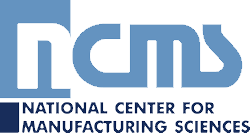Stormwater Rules for Metal Finishers
EPA Stormwater Fact Sheet for Metal Finishers The original EPA stormwater regulations (referred to as Phase I) went into effect in 1990. These rules required certain types of industrial facilities to obtain a National Pollutant Discharge Elimination System (NPDES) permit for their stormwater discharge. Operators of one of those types of facilities (category 11 - "light industry") were exempted from the permit requirement provided their industrial materials or activities were not "exposed" to stormwater. The 1990 stormwater regulations allowed painting facilities (and other facilities categorized as "light industry") to make their own determination of whether there was exposure of industrial materials to stormwater. If not, there was no need to submit a permit application.
Those metal finishers who do have "exposure" to stormwater should have applied for a permit and should currently be abiding by the latest requirements. But some metal finishers have either determined that they do not have stormwater exposure or have remained unaware of the regulation.
This situation changed. Revised stormwater regulations, originally referred to as Phase II Stormwater Rules (now simply called Industrial Stormwater Regulations), were published by EPA in 1999. The "new" rules eliminated the "no exposure" option. Now, all metal finishing facilities (except those located in specified arid areas) must either:
have an NPDES stormwater permit, or
submit a written certification to their NPDES permitting authority once every five years indicating that the facility meets the definition of "no exposure."
In other words, if you determine that you have no exposure, it is no longer sufficient simply to take no further action. You are now required to document your determination in writing.
If you do not meet the definition of "no exposure," and if you do not have a stormwater permit, you are currently out of compliance.What is the Regulatory Definition of “No Exposure”?
"No exposure" means all industrial materials and activities are protected by a storm-resistant shelter to prevent exposure to rain, snow, snowmelt, and/or runoff.
"Industrial materials or activities" include, but are not limited to:
material handling equipment or activities
industrial machinery
raw materials, intermediate products, by-products, final products, or waste products.
EPA has prepared a useful explanation for rule: Conditional No Exposure Exclusion for Industrial Activity.
How to Determine if You Meet the "No Exposure" Definition
Your state environmental regulatory agency may provide guidance on determining if you meet the "no exposure" definition. Use the Paint Center's Stormwater Resource Locator (SWRL) to find information about your state program.
EPA published a four-page No Exposure Certification form that uses a series of yes/no questions to aid facility operators in determining whether they have a condition of no exposure. In some states, this form has been adopted and it may also serve as the necessary certification of no exposure (provided the operator is able to answer all of the questions in the negative). Some states have published their own "no exposure" form. Use the SWRL to find the form that should be used in your state.
Submitting Your Written Certification of "No Exposure" --- Where and When?
The written certification of "no exposure" should be submitted to your NPDES authority, which can be either your state agency or the EPA Regional office in your region, as discussed above.
We recommend that you contact your NPDES authority to determine when the certification is due. The Phase II rule did not specify a due date. Use our SWRL feature to track down this information for your state, and to find contact information.
How to Apply for a NPDES Industrial Stormwater Permit
If your facility does not meet the definition of "no exposure," then you need a stormwater discharge permit. There are two types of NPDES industrial storm water permits: general and individual permits. In either case, you apply for coverage to your NPDES stormwater control authority. As discussed, above, for most states this is your environmental regulatory agency. For certain states this is your Regional EPA office.
- General Permits. Most industrial facilities have permit coverage under a statewide general permit that covers stormwater discharges from industrial facilities within the state. To obtain coverage under a statewide permit, you must submit a Notice of Intent (NOI) to your state agency (or EPA Regional office if you are in an unauthorized state). Most state general permits have similar requirements, such as:
- You must develop and implement a Stormwater Pollution Prevention Plan (SWPPP), which specifies Best Management Practices (BMPs) that will prevent all pollutants from contacting stormwater.
- Perform regular inspections to ensure your compliance with all BMPs.
- Individual Permits. There are certain circumstances where a general permit is either not available or not applicable to a specific facility. In this type of situation, a facility operator must obtain coverage under an individual permit that the NPDES permitting authority will develop with requirements specific to the facility. This is an involved process, and you should contact your state water pollution control agency for advice.

